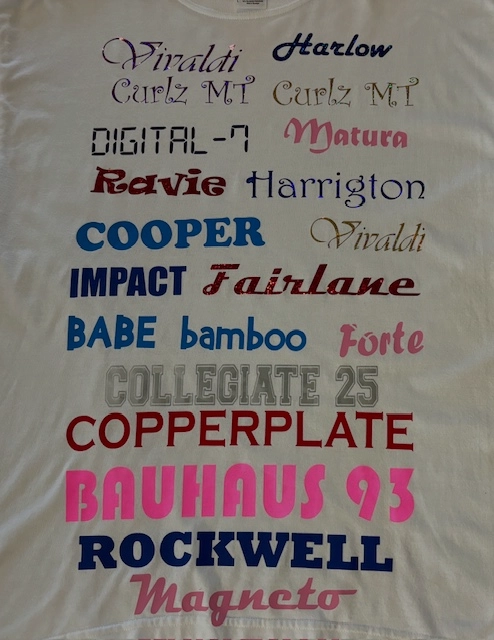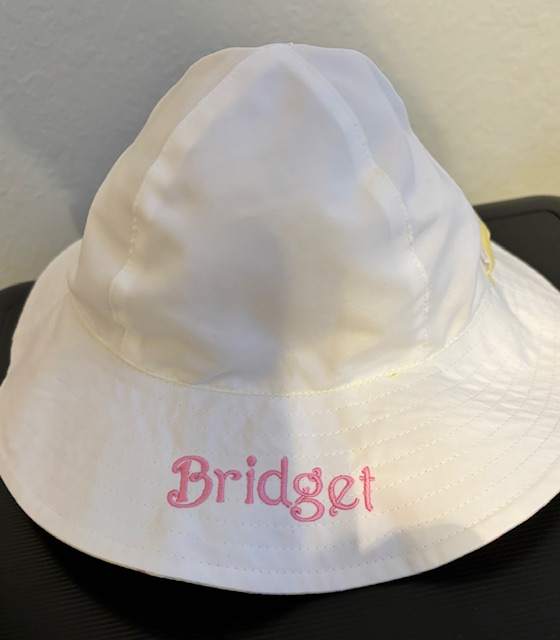The Art of Custom-made Embroidery: Unlocking the Secrets to Creating Unique and Unforgettable Styles
Embroidery, a craft soaked in tradition and virtuosity, holds within its detailed stitches the power to transform fabric into a canvas of special expression. The keys to creating personalized needlework designs that mesmerize the eye and leave a lasting perception hinge on a fragile balance of method, imagination, and focus to information. As we look into the world of personalized embroidery, we reveal the nuanced interaction in between string selection, sew intricacy, and layout personalization that boosts a mere garment to a work of art. Join us on a journey through the art of custom embroidery as we unravel the mysteries behind crafting absolutely remarkable and unique creations.
Choosing the Right Embroidery Threads
When picking embroidery threads, what crucial factors should you consider to guarantee the finest results for your custom designs? The selection of embroidery string is vital in determining the final result of your embroidered design.
In addition, the weight or thickness of the thread plays a substantial role in the appearance of the embroidery. Thicker threads can add measurement and appearance to your design, while finer threads are excellent for detailed information and tiny message. Furthermore, thinking about the color fastness and washability of the string is essential to make sure that your custom-made layouts preserve their quality and vibrancy in time. By very carefully assessing these variables and picking premium threads that meet your specific needs, you can improve the visual allure and durability of your stitched creations.
Discovering Various Stitch Strategies
To look into the world of 'Discovering Different Stitch Methods', one must grasp the ins and outs and nuances that each stitching technique offers the art of embroidery. Various stitch strategies not just include aesthetic passion but additionally add to the total texture and dimension of the style. One preferred stitch strategy is the satin stitch, which entails closely stuffed parallel stitches to create a smooth and shiny surface, ideal for loading in shapes and creating bold lays out.
On the other hand, the backstitch is a versatile technique often made use of for laying out and including fine details. It involves stitching backwards to produce a strong line of embroidery. In addition, the French knot stitch adds a responsive aspect to styles, ideal for producing distinctive accents like flower centers or decorative touches.
Checking out different stitch methods allows embroiderers to have fun with light, darkness, and deepness within their layouts, elevating the visual appeal and creative top quality of their needlework jobs. By mastering various stitching techniques, one can open countless opportunities for creating special and remarkable customized embroidery pieces.
Incorporating Personalized Style Aspects
Having actually discovered the ins and outs of various stitch techniques such as the satin stitch, backstitch, and French knot, the focus currently changes in the direction of integrating individualized layout elements in custom needlework projects. Customized layout aspects play an essential function in making embroidery projects absolutely special and memorable. One means a tailored suit to include customization is by adding initials, names, or substantial dates to the design. This not just includes an individualized touch yet likewise enhances the nostalgic worth of the needlework item.
An additional method to incorporate tailored layout components is by consisting of icons or motifs that hold special definition to the recipient or show their rate of interests and individuality. As an example, including a preferred blossom, animal, or hobby-related sign can make the embroidery style a lot more purposeful and personalized. In addition, selecting shades that reverberate with the recipient or line up with the designated motif can better improve the customization of the needlework task.
Understanding the Art of Shade Sychronisation

One key facet of shade control is understanding shade concept. This includes knowing just how various colors connect with each other, the emotions they share, and exactly how they can be combined to create aesthetically appealing designs. By using color theory principles, embroiderers can produce harmonious color combinations that boost the total appearance of the style.
Additionally, paying interest to contrast is important in color sychronisation. Using contrasting colors can aid certain elements of the design pop, improve readability, and develop an aesthetically vibrant embroidery piece. By mastering the art of shade coordination, embroiderers can raise their designs and produce remarkable pieces that reverberate with customers and visitors alike.
Enhancing Structure With Advanced Embroidery Stitches

Bullion knots, on the various other hand, can be made use of to create twisted, ropelike aspects that add an elegant feel to the embroidery. Trying out with these sophisticated needlework stitches enables you to press the borders of typical embroidery and create absolutely unique and visually enticing structures in your styles.
Conclusion
To conclude, the art of custom embroidery entails a mix of choosing the appropriate threads, discovering different stitch techniques, integrating individualized layout elements, grasping color control, and improving structure with advanced stitches. By understanding and implementing these crucial elements, embroiderers can produce unique and unforgettable styles that showcase their creative thinking and skill. Needlework enthusiasts can unlock the tricks to developing gorgeous and custom pieces that stick out and leave a long-term impression.